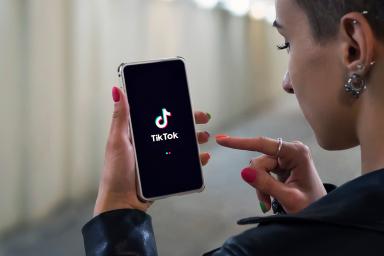Advantages of primary and secondary market research
Get the best from your market research by knowing the advantages and disadvantages between primary and secondary market research techniques.
Market research is essential when you’re starting your new business.
By researching your target market and customers, you can see if there’s a demand for your products and services as well as determine the best branding, pricing and marketing strategies to ensure your business is a success.
Market research is vital to test your new business idea.
Discovering there’s a demand for your products and services helps you write your business plan.
If you’re looking to raise funding, having research that supports your business idea can help convince investors that your start up is a good bet.
Market research can be divided into two main types: primary research and secondary research.
The main difference between primary and secondary research is down to how data is collected, and the type of information you want to find out.
Primary research
Primary research is any research that you carry out yourself, or that you commission someone to carry out, that collects information directly from your target audience.
Primary research is characterised by:
- gathering fresh data that has not been previous collected;
- research that’s conducted by you, your team or by a market research firm you hire for the purpose;
- the collected information being up-to-date, unlike secondary data which may be old and therefore no longer accurate;
- specific results. Primary research aims to answer questions that are relevant only to your business, allowing you to can gain valuable insight into the key issues that affect your business; and
- the data you collect belongs to you. Competitors cannot get the data and information unless you publish it, which gives your business a competitive advantage.
Examples of primary research
Surveys, one-to-one interviews, focus groups and observation are the most common methods of conducting primary research, though there are lots more.
The main examples of primary research are:
- Surveys – You can ask the same questions to several people by email, phone, face-to-face, surveys hosted on your company website, or using social media. For example, you could email existing customers asking them to complete a survey or use Facebook to get feedback on a new product or service idea you may have.
- Focus groups – Focus groups involve getting a group of around 6-8 people in a room with a moderator to discuss a given subject and answer in more detail. Focus groups are often used by companies to get feedback on new product concepts, product packaging, pricing and marketing, but can be used to answer any primary research topic.
- Interviews – One-to-one interviews may involve a questionnaire or a free-flowing discussion between the researcher and interviewee.
- Observations – This is a qualitative method of collecting information either by overtly or covertly watching and observing others in natural or planned environments. For example, an online retailer may set up a computer and observe how a test subject navigates their online store to purchase an item, with the aim of getting feedback that will help improve the online buying experience.
If you are considering undertaking primary research, you must ensure that, where this will include the collection of personal data, you comply with all data protection laws.
You must also ensure that you have the necessary consents or another lawful basis for contacting individuals directly, for example, sending them a survey via email.
Further information on data protection law can be found on the website of the Information Commissoner’s Office.
If you are in any doubt about your obligations under data protection law it is important that you obtain legal advice before carrying out any primary research. Primary research costs
Primary research can be costly, although a small online survey can be free to set up and run.
The more effort, time and people involved in primary research, the more the research project will cost.
Doing it yourself is the cheapest option, though you’ll need to factor in the cost of your time and effort in doing so.
If you want to use an agency to conduct research, costs can start from around £5,000.
A research project conducted by a London-based market research company could cost around £30,000.
However, there are a growing number of online tools available which allow you to conduct primary research yourself.
You can include a survey on your website and then email customers asking them to complete it.
Running a poll on social media is another good way to gain feedback.
Pros and cons of primary research
- Advantages of primary research – Data collected is up-to-date, relevant and specific to your research objectives. Primary research can deliver ‘trade secrets’ – competitors have no access to your data, giving you a competitive edge. Because of the approaches it employs, it’s possible to research just a small percentage of your market – say, 100 customers in a survey – to be able to apply those findings to the entire market. It’s possible to conduct low-level market research, such as an online survey, cheaply and easily.
- Disadvantages of primary research – It can be expensive, time-consuming and take a long time to complete if it involves face-to-face contact with customers. It requires some prior information about the subject, and ideally market research skills to get the best results. Attracting enough customers to take part in your survey, especially when doing it yourself, can be challenging.
Secondary research
Secondary research means research that has previously been undertaken, usually by another business or organisation, but is publicly available for free (such as government statistics) or paid-for (such as a research paper by an organisation).
Secondary research is characterised by:
- gathering previously researched information obtained originally by primary research;
- being based on already analysed and interpreted information and data, unlike primary research that deals with raw data;
- using data that has been collected by someone else other than the researcher;
- the same data being available to both you and your competitors;
- being available immediately – there’s no need to set up a primary research method such as a survey and wait for the results;
- being fast and easy, ideal for gaining a broad understanding of a market quickly and cheaply.
Secondary research examples
Secondary market research can be found at your local library and online in news stories, industry publications, reports, whitepapers, government, local government and business websites.
- Government – Has a wide availability of open data such as census and geographic information, along with whitepapers and reports. Useful government sources include the Office of National Statistics (ONS).
- Competitors – Company reports, press releases and websites are easy to find and may provide some information of use.
- Trade organisations and unions – Some organisations conduct research into their sector and issues that face their membership. Check for press releases and reports.
- General media – Journals, newspaper and magazine articles often report surveys and findings, especially on issues such as consumer confidence, trends and spending patterns.
- Commercial market research organisations – paid-for research is available from companies such as Mintel, Euromonitor and YouGov which has a handy audience profiling tool. Research is usually available as market reports containing both the data summaries, commentary and interpretation, such as market trends or customer spending forecasts.
However, you should take care how you use secondary research.
Much of it may be protected by copyright or other intellectual property laws which restrict your right to reproduce it.
Secondary research costs
For a start up, secondary research is useful as it can be low-cost or even free.
A lot of secondary research is freely available online or from public libraries.
If you’ve more budget, you can pay for market research reports specific to your market or commission research tailored specifically to you from market research companies.
Pros and cons of secondary research
- Advantages of secondary research – Fast, low cost and easy to find. You can do secondary research yourself using a computer and internet connection.
- Disadvantages of secondary research – Provides broader results than primary research which offers more detailed, targeted data specific to research objectives. Analysing secondary data can be tricky as you may not be aware of the variable involved in the primary research, and you need to be confident of the source behind the original research. It can age quickly, making it risky to use as a basis for critical business decisions such as launching a new product.
Primary vs secondary research – which should I choose?
There are advantages to using both primary and secondary research.
Secondary research gives you a foundation to build on, while the primary research fills in the gaps by identifying specific needs.
First examine your requirements and budget.
Look to see what secondary research is available first before starting a primary research project.
You may be able to find the answers you need for before spending a penny.
For example, if you’re thinking of opening a local café or coffee shop, you can use secondary research to determine your shop’s location.
Secondary sources should reveal useful demographic information, such as average household income and spending habits, along with local traffic patterns.
You can then conduct primary research by surveying a sampling of households to find out how often they’re likely to use a coffee shop and how much they’re willing to spend.
Learn with Start Up Loans and help get your business off the ground
Thinking of starting a business? Check out our free online courses in partnership with the Open University on being an entrepreneur.
Our free Learn with Start Up Loans courses include:
- Entrepreneurship – from ideas to reality
- First steps in innovation and entrepreneurship
- Entrepreneurial impressions – reflection
Plus free courses on climate and sustainability, teamwork, entrepreneurship, mental health and wellbeing.
Tags relating to this content
Disclaimer: The Start -Up Loans Company makes reasonable efforts to keep the content of this article up to date, but we do not guarantee or warrant (implied or otherwise) that it is current, accurate or complete. This article is intended for general information purposes only and does not constitute advice of any kind, including legal, financial, tax or other professional advice. You should always seek professional or specialist advice or support before doing anything on the basis of the content of this article.
The Start-Up Loans Company is not liable for any loss or damage (foreseeable or not) that may come from relying on this article, whether as a result of our negligence, breach of contract or otherwise. “Loss” includes (but is not limited to) any direct, indirect or consequential loss, loss of income, revenue, benefits, profits, opportunity, anticipated savings, or data. We do not exclude liability for any liability which cannot be excluded or limited under English law. Reference to any person, organisation, business, or event does not constitute an endorsement or recommendation from The Start-Up Loans Company, its parent company British Business Bank plc, or the UK Government.
Your previously read articles
Apply for a Start Up Loan
We've helped over 100,000 businesses get off the ground with a Start Up Loan. Can we help make your business dream a reality?
Find out more for a start up loan
Essential guide to starting a business
Our Essential Guide to Starting a Business is your roadmap to turn your business idea into a reality.
Across 12 chapters, you'll discover a wealth of information designed to empower and equip you with the knowledge needed to successfully launch and manage your new venture.
Sign up for our newsletter
Just add your details to receive updates and news from Start Up Loans
Sign up to our newsletter


